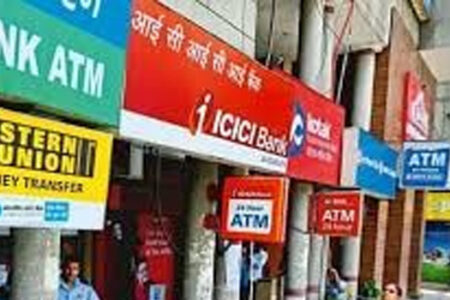Bond dealers, the accounts department and the technology division of all banks are busy these days, preparing for the Reserve Bank of India’s (RBI’s) latest norms for the classification, valuation, and operation of investments, which will come into effect from the next financial year, beginning April 2024.
The changes in norms, to be in sync with the global best practices, follow a discussion paper that the banking regulator had issued in January 2022.
Going by the new rules, banks will have to classify their investments, except for their exposure in their own subsidiaries, joint ventures, and associates, into three categories: held to maturity (HTM), available for sale (AFS) and fair value through profit and loss (FVTPL) of which the current held for trading (HFT) segment will be a sub-category.
The notification, released in the second week of September, has the finer details. For the accounts department and software, the changes will be a one-time affair, as the system needs to be tweaked to accommodate the new accounting norms but, on the treasury floor, the trading activities will change for good.
Let’s look at three major changes.
One: The cap on HTM is being lifted. Banks are required to keep 4.5 per cent of their net time and demand liabilities (NDTL), a loose proxy for deposits, with the RBI and they don’t earn any interest on that. This is the cash reserve ratio (CRR). Then, there is an 18 per cent statutory liquidity ratio (SLR). Banks need to buy government bonds to meet the SLR requirement. The average SLR on the banking system at this point could be around 28-29 per cent.
The investments in government as well as corporate bonds are divided into three categories, earlier mentioned. The cap on HTM, 19.5 per cent earlier, was raised to 23 per cent when the Covid pandemic hit the world. The plan has been to bring it down to the old level in phases but now the cap is lifted and banks can have as many bonds in the HTM category as they wish.
Pros: Bonds in this category don’t need to be mark to market (MTM) — an accounting practice, which dictates that if the prices of the bonds drop below the purchase price, the banks need to make good the difference from their income. Yield and bond prices move in reverse directions. In other words, if a bank treasury decides against trading and keeps the entire SLR exposure in the HTM category, it would not need to book MTM losses when the bond yields rise.
Cons: Like the earlier practice, the banks can shift bonds from the HTM category to AFS once a year, preferably in April. Typically, banks buy bonds for the HTM basket and if the prices rise, or the investments are “in the money”, they transfer them to the AFS basket.
This is done after seeking an approval from the board. That has been the case till now. But the RBI now wants the banks to seek the regulator’s approval, too, on top of the board approval. One may like to ask why should the regulator come into the picture? Isn’t this a bank’s business decision? Besides, in a volatile market, if the regulator takes time to approve it — that’s quite natural as there will be queries — a bank may miss the opportunity to book profits. One can’t expect the bond yield to remain at the same level for days.
By adding a layer of external approval, the RBI is implicitly discouraging the shift of bonds from HTM to AFS basket.
Two: The new norms also include the corporate bonds in the HTM category.
Pros: This will be a huge boost for the still-developing corporate bond market. Despite the continuous nudge by both the banking and market regulators, commercial banks are not too excited to buy corporate bonds for fear of booking MTM losses. They would rather lend to a company instead of subscribing to its debt papers. In other words, most banks want to keep their corporate exposure in their loan book and not investment book. Now, they will be encouraged to buy corporate bonds, deepening the market.
Cons: At the risk of sounding like Cassandra, let me say, there are risks for allowing banks to put the entire investment in bonds — both sovereign as well as corporate papers — in the HTM category. Remember the fall of the Silicon Valley Bank (SVB), the 16th-largest bank in the US with around $200 billion in assets in January? It failed because it could not manage the interest rate risks.
The 40-year-old bank had invested in long dated securities. With the rise in interest rates, yields on these assets started rising, eroding their value. As the unrealised and unhedged losses mounted from investments, the tech start-ups — the mainstay of the bank’s customer base — that kept their money with SVB in the form of deposits, started losing trust in the bank. When the investments in such start-ups slowed, they had to pull out funds as they needed money to meet operational expenses. SVB had no choice but to sell some of the securities, booking losses. The loss eroded its capital, leading to a run on the 40-year-old bank, headquartered in Santa Clara, California.
Of course, the RBI is far stricter in its vigil and such a thing is unlikely to happen here. Even though the bonds held in HTM shall be carried at cost and shall not be MTM after initial recognition, they shall be subject to income recognition, asset classification and provisioning norms.
Three: Currently, if a bank is buying bonds for the HFT basket (which will become a sub-category of FVTPL, from April 2024), it must sell them within 90 days. The new norms have waived the time limit.
Pros: Lifting the holding period for HFT will give better liquidity to illiquid bonds and state government bonds. It will give a fillip to trading and create liquidity, which is necessary, particularly after India’s inclusion in the JPMorgan Government Bond Index-Emerging Markets (GBI-EM) global index suite. The process will start in June 2024. India will get a weight of 10 per cent in the GBI-EM Global Diversified Index, but not at one go. From June, 1 per cent each will be added every month, making it 10 per cent by March 2025. Incidentally, in January 2024, JPMorgan will start “enhanced liquidity screening” for bonds issued in a global format from index-eligible markets.
This will also boost the so-called spread trade and the OIS (overnight indexed swap) market. Now, if a bank buys a five-year bond, say carrying 7.4 per cent yield, and takes a position for five-year OIS at 6.88 per cent, the bank pays less for the OIS while receiving more from the bond yield (the difference is 0.52 per cent). Once the new norms are in place, the bank can stay invested for five years and earn the spread which the current 90-day cap does not allow it.
Cons: Nothing.
This column first appeared in Business Standard.
The writer, a Senior Adviser to Jana Small Finance Bank, writes Banker’s Trust every Monday in Business Standard.
Latest book Roller Coaster: An Affair with Banking
Twitter: TamalBandyo
Website: https://bankerstrust.in



